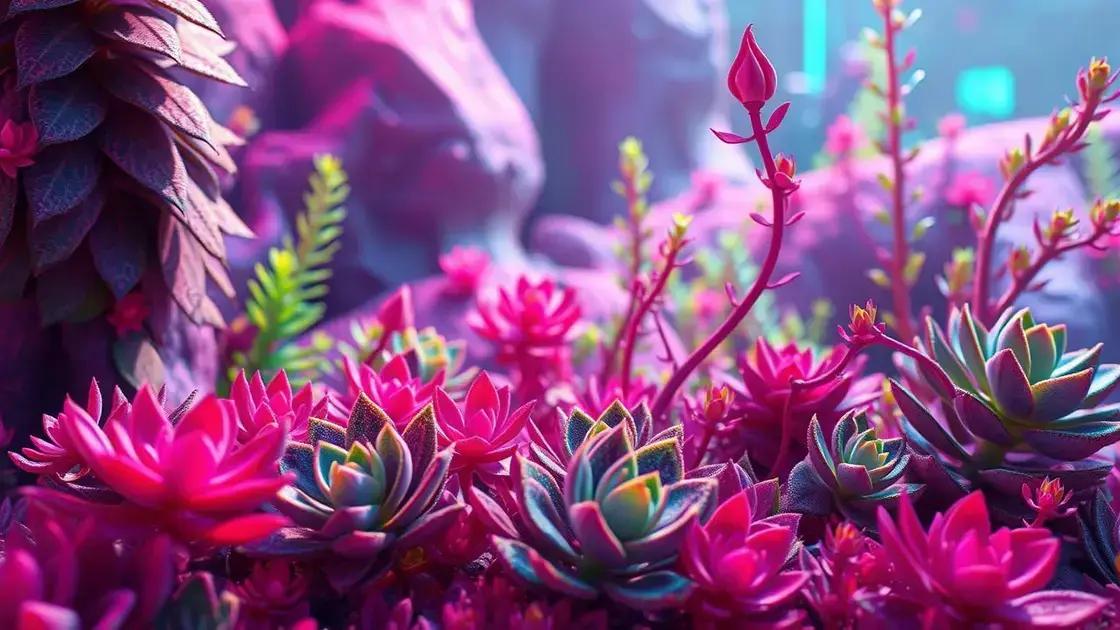How to Take Care Kalanchoe Plants: 7 Secrets for Thriving Succulents
How to take care kalanchoe plants can feel overwhelming for many new plant owners, but it doesn’t have to be! With just a few straightforward techniques, you can keep your kalanchoe thriving and blooming. Understanding how to meet their specific needs, such as sunlight and watering, is key. Dive in to explore the essential tips for nurturing these beautiful succulents.
Table of Contents
ToggleEssential watering schedule for kalanchoe plants
How to take care kalanchoe plants involves understanding their unique watering needs. A proper watering schedule is crucial for keeping your kalanchoe plants healthy and vibrant. Unlike other plants, kalanchoes prefer to dry out between waterings. Below, we’ll explore a detailed guide to help you create an effective watering routine.
Key factors influencing your watering schedule
- Soil moisture: Always check the soil moisture before watering. Kalanchoes thrive in well-draining soil, and too much moisture can lead to root rot.
- Container type: Plastic pots retain moisture longer than clay pots. Adjust your watering frequency accordingly.
- Seasonal changes: Watering needs may vary depending on the season—more frequent in warm months and less in winter.
General watering guidelines
- Water only when the soil is dry: Stick your finger about an inch into the soil. If it feels dry, it’s time to water.
- Use room temperature water: Cold water can shock the plant. Aim for a moderate temperature.
- Water thoroughly: Ensure water flows out of the drainage holes, giving the roots a good soak.
- Frequency: Generally, water kalanchoe every 2 to 3 weeks, adjusting based on the season and environmental conditions.
Signs of overwatering
- Yellowing leaves
- Wilting despite moist soil
- Moldy soil surface
When planning your kalanchoe’s watering schedule, keep in mind that these plants are sensitive to water levels. Checking for signs of stress can help you adjust your care techniques to better support their health.
Experiment with these tips to find the perfect balance for your plants. Every kalanchoe might respond slightly differently, so keep an eye on their growth and appearance.
Optimal sunlight exposure for healthy kalanchoes

Optimal sunlight exposure for healthy kalanchoes is essential for their growth and blooming potential. Understanding how much light your kalanchoe needs can significantly impact its vibrancy and overall health. Here’s a detailed guide to get the most out of your kalanchoe’s sunlight needs.
\n\nUnderstanding light requirements\n
- \n
- Kalanchoes thrive in bright, indirect sunlight.
- Direct sunlight for a few hours a day can encourage blooming but watch for signs of sunburn.
- Low light can lead to leggy growth and reduced flowering.
\n
\n
\n
\n\nIdeal locations for sunlight exposure\n
- \n
- East-facing windows: These provide gentle morning sunlight, perfect for your kalanchoe.
- South-facing windows: Offer the brightest light, but ensure the plant is sheltered from strong midday sun.
- West-facing windows: Direct afternoon light can be too intense; use sheer curtains to diffuse the rays.
\n
\n
\n
\n\nSigns of improper sunlight exposure\n
- \n
- Too much sun: Leaves may become scorched or yellow.
- Too little sun: Stretched stems and fewer blooms are common signs.
\n
\n
\n\n
To optimize your kalanchoe’s health, regular monitoring of light exposure and adjusting its location as necessary is key. Additionally, consider exploring indoor gardening techniques for a more in-depth understanding of plant care.
\n\n
By balancing sunlight exposure, you can ensure that your kalanchoe flourishes beautifully in your indoor environment.
Soil and fertilizer tips for thriving kalanchoe growth
Soil and fertilizer tips for thriving kalanchoe growth are essential for ensuring your plants remain healthy and produce vibrant blooms. The right soil composition and fertilization routine will significantly influence the health and vitality of your kalanchoe. Let’s delve into what you need to know.
Choosing the right soil
- Kalanchoes prefer well-draining soil to prevent root rot.
- A cactus or succulent mix is ideal for their needs.
- Consider adding perlite or sand to improve drainage.
Fertilization guidelines for kalanchoes
- When to fertilize: During the growing season (spring and summer), fertilize every 4-6 weeks.
- Type of fertilizer: Use a balanced, water-soluble fertilizer, diluted to half-strength.
- How to apply: Water the plant with the diluted fertilizer solution, ensuring it saturates the soil.
Signs of nutrient deficiencies
- Yellowing leaves may indicate nutrient deficiencies, particularly nitrogen.
- Stunted growth can be a sign of inadequate nutrition.
- Poor flowering may suggest a lack of phosphorus.
To enhance your kalanchoe care, it’s also beneficial to explore indoor gardening techniques that focus on optimal soil and fertilizer practices. With the right conditions, kalanchoes can thrive and brighten any space.
By paying attention to the soil composition and fertilization schedule, you can ensure your kalanchoe grows robustly and florally.
In conclusion
Caring for kalanchoe plants requires a thoughtful approach to watering, sunlight exposure, and nutrient management through proper soil and fertilizer techniques. By implementing these strategies, you can ensure your kalanchoes not only survive but thrive, bringing vibrant color to your indoor space. For additional tips on enhancing your indoor garden, be sure to check out tips on enhancing your indoor garden.

